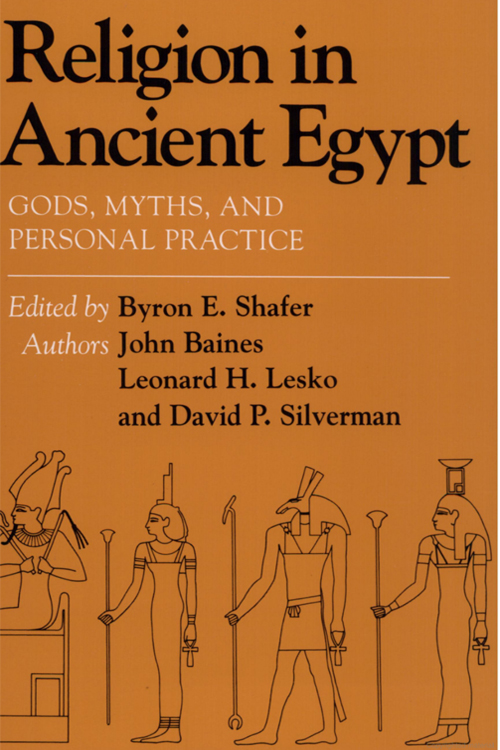Text summary
From: Book · Byron E. Shafer · 1991

Text: Full Translation
Archaic Egyptian ⟶ English a
| Translation | |
|---|---|
| p. 94 | |
| Utterance 301 | |
| Your offering-cake belongs to you, Niu and Nenet, | |
| who protect the gods, | |
| who guard the gods with your shadows. | |
| Your offering-cake belongs to you, Amun and Amaunet, | |
| who protect the gods, | |
| who guard the gods with your shadows. | |
| Coffin Text Spell No. 76 | |
| Going forth to the sky, going down to the barque of Re, becoming a living god. | |
| O you eight Heh (chaos) gods, keepers of the chambers of the sky, whom Shu made from the efflux of his limbs, who bound together the ladder of Atum, come in front of your father with me, give me your arms. Bind together the ladder for me; I am the one who created you and made you, as I was created by your father, Atum. | |
| I am weary of the supports of Shu since I raised up my daughter, Nut, from upon me, so that I might give her to my father Atum in his presinct. I have placed Geb under my feet. This god binds together the two lands for my father, Atum; he assembles for himself the Great Flood (heavenly cow). I have placed myself between them, so the Ennead cannot see me. I am Shu, whom Atum created, from whom Re came to be. I was not fashioned in the womb, I was not bound together in the egg, I was not | |
| p. 95 | |
| conceived, but my father, Atum, spat me out in the spittle of his mouth, together with my sister Tefnut. She went forth after me. I was covered with the breath of the throat. | |
| The phoenix (Benben) of Re was that from which Atum came to be as Heh (chaos), Nun (the watery abyss), Kek (darkness), Tenem (gloom). I am Shu, father of the gods; Atum used to send his Sole Eye seeking me and my sister, Tefnut. I made illumination for her because of the darkness, and she found me as man of millions (Heh). I am the one who begot the Heh gods again as Heh, Nun, Tenem, Kek. I am Shu who begot the gods. | |
| O you eight Heh gods, whom I made from the efflux of my flesh, whose names Atum made, when the mdw[?] of Nun was created, on that day when Atum spoke in Nun, Heh, Tenem, Kek. | |
| Source(s) a Shafer et al., RIAE, 94-95 launch . | |
Original source data
Background
"Coffin Text Spell No. 76 / Utterance 301" is an English translation of the Hermopolis creation myth by Leonard H. Lesko.
Cite this page
OMNIKA Foundation Contributors. ""Coffin Text Spell No. 76 / Utterance 301": English Translation of Hermopolis Creation Myth by Leonard H. Lesko." OMNIKA – World Mythology Index, OMNIKA Foundation, 19 Nov. 2019, omnika.org/stable/326. Accessed 10 Dec. 2025.
OMNIKA (2019, November 19). "Coffin Text Spell No. 76 / Utterance 301": English Translation of Hermopolis Creation Myth by Leonard H. Lesko. Retrieved from https://omnika.org/stable/326
OMNIKA Foundation Contributors. ""Coffin Text Spell No. 76 / Utterance 301": English Translation of Hermopolis Creation Myth by Leonard H. Lesko." Las Vegas, NV: OMNIKA Foundation. Created November 19, 2019. Accessed December 10, 2025. https://omnika.org/stable/326.







